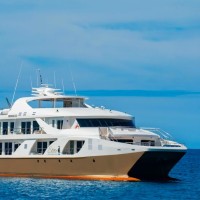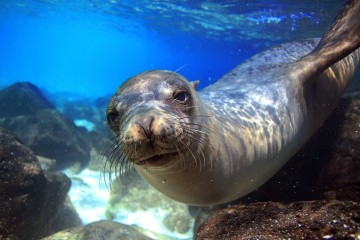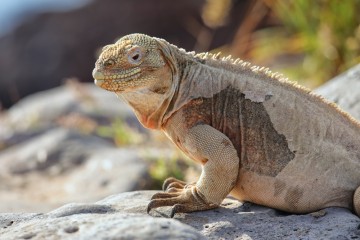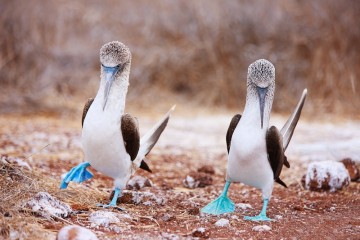Galapagos: Elite | 5 days luxury
Tour Overview
Explore the Galapagos over 5 days aboard the luxury catamaran, Elite.
As we cruise the enchanted islands in style we visit the giant Galapagos tortoises and learn more about their habitat. Be wowed by the intriguing and colourful bird life including red-footed boobies, Nazca boobies, the fan favourite, the blue footed boobie! While snorkelling encounter many dazzling reef fish, sea turtles, rays, and playful sea lions.
We explore by foot, by dinghy, kayak, or even stand up paddle board if you are keen! The landscapes are varied, walk over volcanic rocks, pristine white beaches or even red beaches! Wildlife is everywhere - marine iguanas, Sally lightfoot crabs, flamingos and the Galapagos fur sea lion make your visit unforgettable.
You will be well looked after by outstanding naturalist guides, enjoy delicious cuisine, and ample comfort onboard. Relax with a drink on the sky deck or in your suite with panoramic windows and a private balcony.The 16 passenger Elite, is next-generation twin-hulled catamaran will ensure a comfortable and memorable exploration cruise through the azure waters of the Galapagos Islands.
The Elite offers Galapagos cruises for a duration of 4, 5 or 8 days - ask us for more options.
Viva's Best Bits...
Our cruises take you a range of landing sites in the Galapagos teeming with unique wildlife. Make sure you have the camera ready blue footed boobies are always photogenic!
Bachas Beach is perfect for snorkelling or swimming amongst marine life, such as sea turtles and tropical fish. At other locations you will encounter playful sea lions, marine iguanas and maybe a ray!
"Simply relax and disconnect from the world, enjoy the onboard luxury, have a glass of wine on your private balcony as you watch the sun go down" Tara, Team Viva



